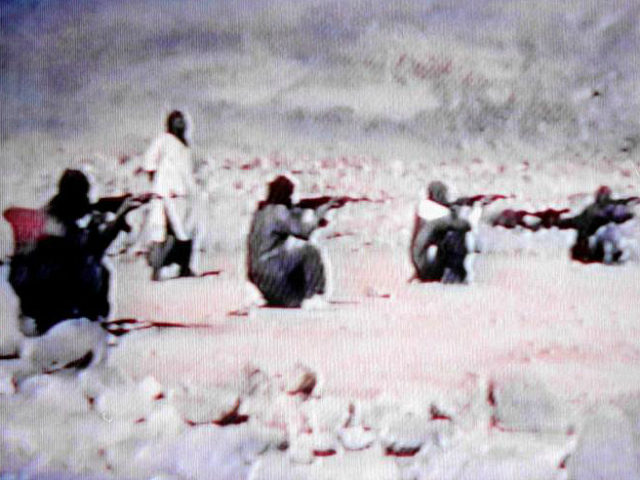The “tens of thousands” of jihadists loyal to al-Qaeda have eclipsed their Islamic State (ISIS/ISIL) rivals’ influence, reach, manpower, and cohesion, reports the Council on Foreign Relations (CFR) think tank, echoing warnings from other analysts.
CFR’s assessment comes soon after the United Nations found that al-Qaeda remains “remarkably resilient,” maintaining its status as the “dominant terror threat” in some regions in the Middle East and Africa.
Although al-Qaeda has spread across nearly all corners of the world, CFR stresses that the group is more potent in Syria, where the number of fighters, estimated at 20,000, exceeds those in the jihadist organization’s former prominent strongholds in Yemen and the Afghanistan region.
“With the demise of the Islamic State, a revived al-Qaeda and its affiliates should now be considered the world’s top terrorist threat,” notes CFR in a report titled “Al-Qaeda’s Resurrection,” adding:
ISIS can no longer compete with al-Qaeda in terms of influence, reach, manpower, or cohesion. In only two domains is ISIS currently stronger than its rival: the power of its brand and its presumed ability to mount spectacular terrorist strikes in Europe.
The U.S.-led coalition and local forces have dealt a significant blow to ISIS in Iraq, Syria, and a few other countries.
Meanwhile, CFR reports:
While the self-proclaimed Islamic State has dominated the headlines and preoccupied national security officials for the past four years, al-Qaeda has been quietly rebuilding.
Its announcement last summer of another affiliate—this one dedicated to the liberation of Kashmir—coupled with the resurrection of its presence in Afghanistan and the solidification of its influence in Syria, Yemen, and Somalia, underscores the resiliency and continued vitality of the United States’ preeminent terrorist enemy.
CFR primarily attributed the resurrection of al-Qaeda to the 2011 Arab Spring, noting:
The upheaval that followed helped the movement revive itself. … Al-Qaeda was among the regional forces that benefited most from the Arab Spring’s tumult.
Nearly 17 years after the United States launched its anti-al-Qaeda war in response to 9/11, the group remains a threat.
CFR’s assessment comes years after the previous U.S. administration, described the terrorist group “decimated,” “on the path to defeat,” or some other variation dozens of times during its tenure.
In 2011, former U.S. President Barack Obama’s administration killed the mastermind of the 9/11 attacks—al-Qaeda’s leader Osama bin Laden
On the 16th anniversary of the September 11 attacks, Breitbart News determined that al-Qaeda and their Taliban allies who made the assault possible had grown stronger despite the blood and treasure the United States has devoted to their demise in Afghanistan and elsewhere.
CFR confirmed warnings from various analysts that the international community’s single-minded focus on destroying ISIS allowed their al-Qaeda rivals to grow stronger, primarily in Syria, now home to al-Qaeda’s most potent wing.
Think-tank analysts point out:
Al-Qaeda’s presence in Syria is far more pernicious than that of ISIS. Hayat Tahrir al-Sham (HTS), the latest name adopted by al-Qaeda’s local affiliate, is now the largest rebel group in the country, having extended its control last year over all of Idlib Province, along the Syrian-Turkish border.
The U.S.-led coalition and their local allies have taken back more than 98 percent of the Islamic State’s so-called caliphate in Iraq and Syria, according to the top American commander in the Middle East, Gen. Joseph Votel.
Meanwhile, al-Qaeda’s new “powerful leader” Ayman al-Zawahiri has made it possible for the jihadist organization to resurrect its global network.
The think tank points out that the group is operating across the globe, reporting:
Forces loyal to al-Qaeda and its affiliates now number in the tens of thousands, with a capacity to disrupt local and regional stability, as well as launch attacks against their declared enemies in the Middle East, Africa, South Asia, Southeast Asia, Europe, and Russia.
Indeed, from northwestern Africa to southeastern Asia, al-Qaeda has knit together a global movement of more than two dozen franchises. In Syria alone, al-Qaeda now has upwards of twenty thousand men under arms, and it has perhaps another four thousand in Yemen and about seven thousand in Somalia.
U.S. officials have described the Yemen-based al-Qaeda in the Arabian Peninsula (AQAP) the group’s most potent wing threatening America.
However, the number of al-Qaeda jihadists in Syria is five times higher than the in Yemen, and about three times higher than in Somalia, home to the group’s ruthless affiliate al-Shabaab.
Despite the losses ISIS has suffered in Iraq and Syria, the group remains a threat, according to the U.S. military and intelligence community.

COMMENTS
Please let us know if you're having issues with commenting.